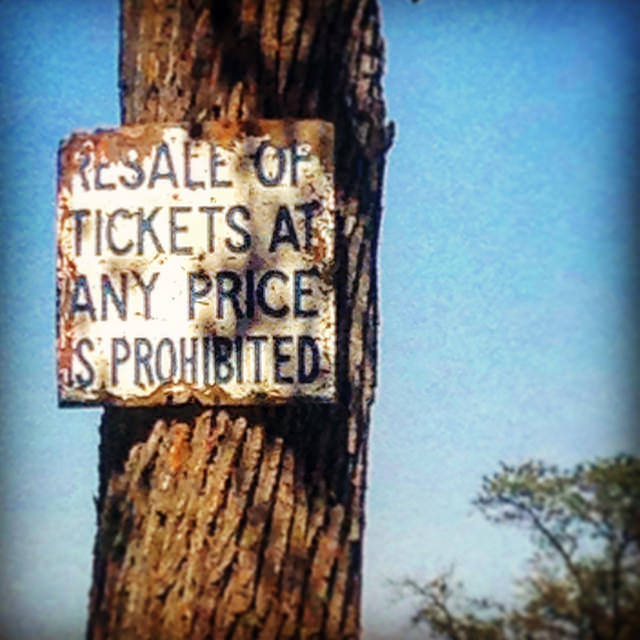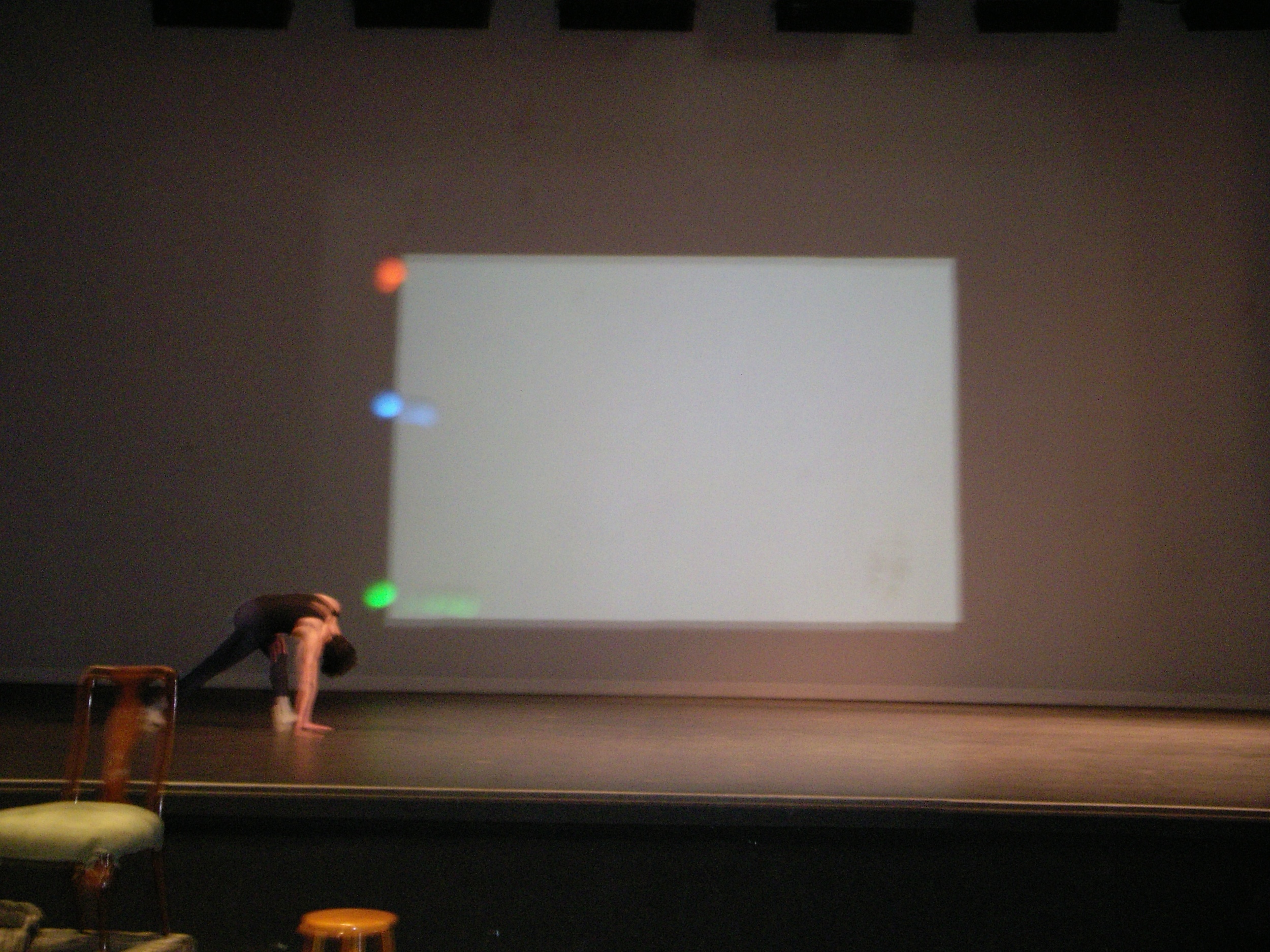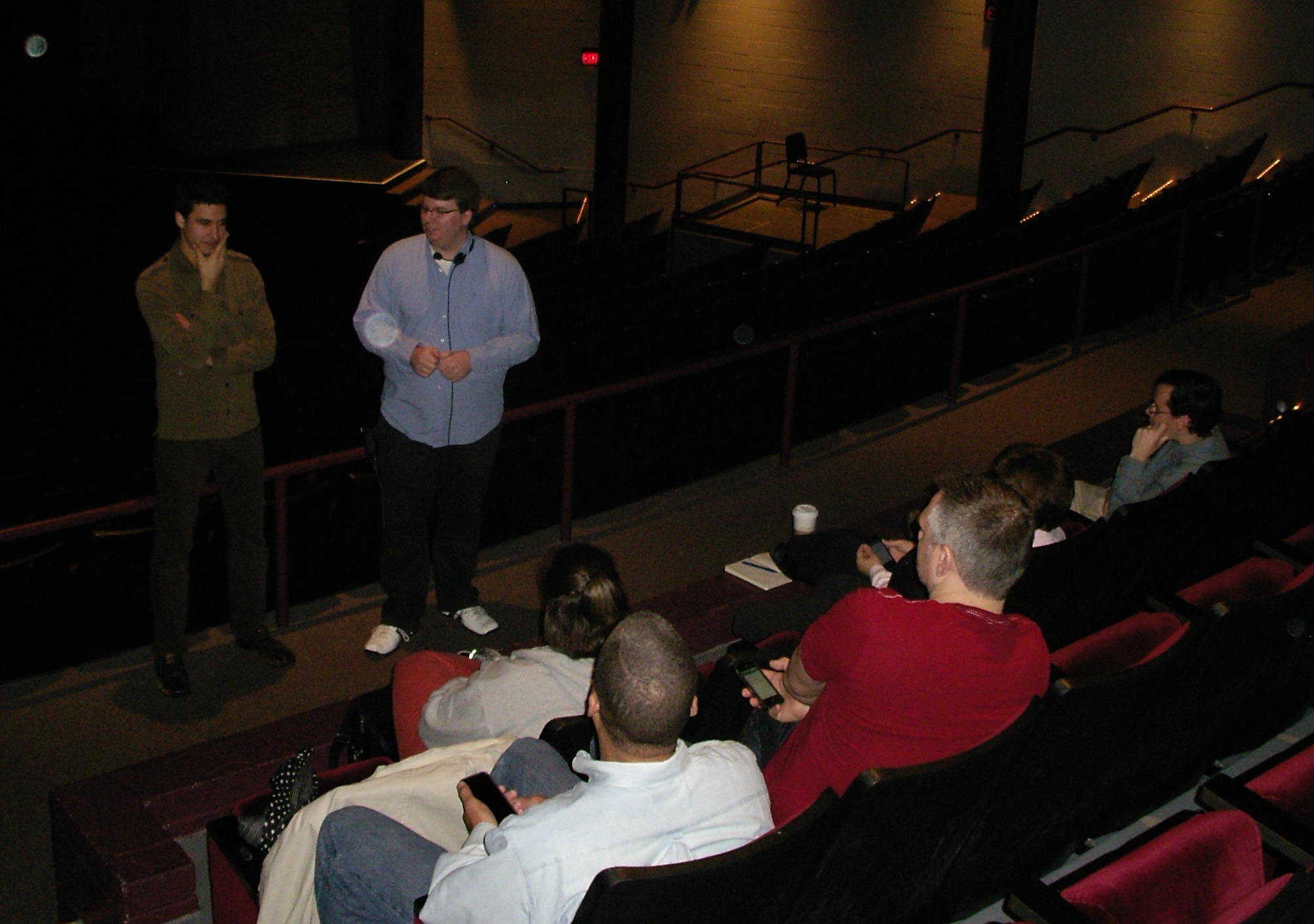Technologies like artificial intelligence and NFTs continue to break into new industries this April. The United States government licensed ChatGPT, dancers paired with robots, and music industry leaders have been taking a stand on AI-made music. We are in the midst of figuring out where these technologies fit into our lives, and how they will change our industries. Feelings of uneasiness continue. The following stories illustrate a variety of viewpoints on the ways in which technology has been integrated into new and unique settings as of late.
TBT: Dance Through the Lens of Tech
Haptic Feedback: Feeling the Dance You Cannot See
Dance relies on the audience’s sense of sight to experience a performance. However, dancing itself is a very tactile experience. A dancer’s precise movements depend on a heightened internal awareness of the body – how joints are stacked and what muscles are activated. They must also maintain an awareness of external forces – how one limb moves in relation to the other, how their skin feels sliding against the floor, and where they sense other dancers moving with them in space.
The experience of the audience is vastly different from that of the dancer. Is there a way to bridge this divide and communicate a multi-sensory experience to the audience, and allow those who cannot see to feel? Tapping into this sense of touch might help audiences experience dance in a new way.
How Haptics Affect Human-Robot Interaction in Dance
Mapping Movement: Network Mapping in the Dance Industry: Part 2
How well do you know the history of your industry? Could you list every branch, every individual, that helped to develop your industry into the complex and beautiful thing it is today? If you asked someone who works in the arts to craft such an image or list, they’d probably be able to give you a significant list of names. Yet, the truth is, a single individual’s list can’t provide the entire picture, just their perception of what the tree looks like.
AI as a Tool in the Arts
Artists are taking advantage of new technologies to enhance their artmaking. They are using AI as a tool in the same way that artists of yesteryear used pen and ink and paintbrushes. This opens a whole new realm of possibilities for arts managers in terms of the scope of multimedia exhibitions and performances. Artists who are using AI as a tool include visual artists, performers, and creators of popular media.
Ticket Scalping: How much would you pay to see the Nutcracker?
New Publication Available: Engaging Audiences Through Sensory-Friendly Performances
AMT Lab's latest publication Opening Doors: Welcoming New Audiences with Sensory-Friendly Performances, is a useful guide for organizations seeking to learn more about the needs and challenges of creating sensory-friendly programming programming. Based on interviews with several sensory-friendly program directors and artists from Pittsburgh Ballet Theatre, Imagination Stage, The Kennedy Center, and TDF’s Autism Theatre Initiative, this publication discusses best practices and important considerations for program development.
National Ticketing Survey Participation Period Extended!
Already your responses are providing valuable insight. AMT Lab has extended the 2015 National Ticketing Software Satisfaction Survey period through March 7, 2015. Collecting information on the attitudes and behaviors of arts organizations currently using ticketing software, the 2015 National Ticketing Survey will help illustrate the met and unmet ticketing needs of art organizations, and capture how ticketing software uses and needs vary by an organization's discipline, budget, staff size, and geographic location. Clear here for the full announcement.
What do you think about your ticketing software?
We are conducting the 3rd National Ticketing Software Survey during the month of February. If you are interested in sharing your experience and your opinions about your software, please let us know. All those participating in the survey will receive a full copy of the report which will provide a national view as well as cluster analyses by discipline, budget size, and geographic region. The data will be useful for both organizations and vendors. Organizations will gain a better understanding of their own practices as compared to their peers and, more importantly, be able to use the findings as evidence for future technology funding campaigns. Vendors will have explicit evidence as to the needs and wants for future software design.
The Space: A Summer of English Arts on a New Experimental Platform
This Olympiad summer, the arts in the UK will be consolidated onto a single online platform called The Space. What’s more? The content on The Space is being provided for free! There’s room, or more fittingly, seats for all, at venues such as the World Shakespeare Festival or Yayoi Kusama’s Obliteration Room at the Tate.
“The Space is a new way to access and experience all of the arts – for free.Available on computer, tablet, smartphone and connected TV, The Space invites you to take part in the biggest summer of arts the UK has ever seen, whenever you want it and wherever you happen to be. ”
 The Arts Council England in partnership with the BBC created The Space as a way for people from all over the world to experience the country’s rich and dynamic arts scene. In effect, a summer of English arts to all! (Albeit without the English summer and its cool Constable Skies). So The Space is certainly something to look forward too because it will feature some of the UK’s best theatrical productions, dances, musical performances, art exhibits, poetry readings, along with content that has been specifically created for the platform.
The Arts Council England in partnership with the BBC created The Space as a way for people from all over the world to experience the country’s rich and dynamic arts scene. In effect, a summer of English arts to all! (Albeit without the English summer and its cool Constable Skies). So The Space is certainly something to look forward too because it will feature some of the UK’s best theatrical productions, dances, musical performances, art exhibits, poetry readings, along with content that has been specifically created for the platform.
Through the course of the summer, the performances staged in theatre, dance, film, and music will be showcased via recordings and live streaming while exhibitions at museums and galleries will be presented via behind-the-scenes footage, photographs, and interviews with artists and curators. The Space will also feature experimental and interactive digital art that can be experienced on the platform itself. Finally, for poetry and literature, there will be a variety of formats, including podcasts, poetry readings, and interactive audio-visual timelines such as the 60 Years in 60 Poems.
While live streaming and online exhibits aren’t entirely new to the performing or visual arts, the presentation of all the arts, all at once, and in one place, is certainly a novelty. As such, The Space is truly remarkable because it is no ordinary task to fit an entire country’s arts scene onto a single platform! If other countries too made their arts available on interactive, well designed platforms, the internet would surely be a destination in itself. Perhaps the introduction of The Space suggests that it already is?!
The Space also signals another significant trend; the quality of arts being made available online continues to improve. Whether it is in opera, film, or even, educational art history, we are privy to some great material. At the same time, the problem with the online format is that there are times when our Google searches are less than serendipitous and our social networks less than social. On such days, we miss out on a lot of online events, projects, and experiments.
Yet on The Space, what will remain certain is most certainly the art. And at the end of each adequately sunny day across the Atlantic, the platform will be populated with new content for visitors to see, hear, read, and experience. Moreover, the content on this living library of the arts will be available until October. After that, it will be time, once again, to continue our search for the arts on the virtual infinity of the internet (The outer Space).
BMW Tate Live: An Online Space for Performance Art
On March 22nd, Jérôme Bel, a french choreographer and dancer, performed in an unknown room at the Tate Modern to an equally unknown audience. Odd as it may seem, there was not a single audience member present in the room. Those who were watching the performance were watching it online, inhabiting a newly unveiled virtual space called the BMW Tate Live: Performance Room.
 “The BMW Tate Live: Performance Room is an innovative series of performances broadcast viewable exclusively online around the globe, as they happen.”
“The BMW Tate Live: Performance Room is an innovative series of performances broadcast viewable exclusively online around the globe, as they happen.”
It is the outcome of “a partnership between BMW and Tate, which focuses on performance, interdisciplinary art and curating digital space.” Jérôme Bel’s performance was the first in a series of five online performances that will run through July, featuring the work of artists Pablo Bronstein, Harrell Fletcher, Joan Jonas and Emily Roysdon.
The idea of an exclusively online performance is perhaps more innovative than the technology being used to showcase it, a Youtube channel and a single camera. Catherine Wood, the Tate’s curator of Contemporary Art and Performance, explained in article on Artinfo that they wanted to transmit the work in the “simplest means” and a single camera essentially acted as the “fourth wall” of the performance space.
Additionally, the integration of Twitter, Facebook, and Google+, allows the audience to write comments during the performance and later pose questions to the curators and artists. This allows for the creation of a virtual audience that is connected in real-time through reactions, thoughts, and the Twitter phenomenon, hash tags (#BMWTateLive). Access to these real-time reactions from around the world truly is phenomenal and wouldn't be possible in a traditional setting. The trade-off, however, could be the evolution of an audience that tweets more than it sees, and comments more than it listens.
When asked by Artinfo on whether this online medium may take something away from a live performance, Catherine Wood replied that there has already been much debate “about how much performance documentation is the work and how much it is a record of the work.” But she added that “Live-ness is inherently mediated by technology in the world we live in now. There will always be a place for just a person in a room and a live audience, but I think this is part of the evolution of performance art that we can't ignore."
http://www.youtube.com/watch?v=kf77fzBOoNo
For those afraid of testing the niche waters of contemporary performance art, the increased accessibility and chance to experience an unfamiliar genre through YouTube cannot be ignored. A few swells of interest, a little online momentum, and the waters of performance art will seem a lot less murky or impenetrable. As of the 4th of April, Jérôme Bel’s performance has been viewed 862 times, but that doesn't take into account the number of people who watched it live.
In order to participate in the ongoing conversation, a viewer must to tune into the Tate's website or YouTube channel as the performance is being broadcast. Since the remaining performances are scheduled to take place at 20.00 hours (London), they will be most accessible to audiences in North America (~15.00 hours) and Europe (~21.oo hours), with the exception of a few arty insomniacs in Asia (~1.00 hours). But for those who may be asleep or at work, each performance is archived and uploaded to YouTube.
The next performance is scheduled for April 26 and features Pablo Bronstein, an Argentinian artist who uses “architectural design and drawing to engage with the grandiose and imperial past of the built environment.” In his performance, Bronstein “will work with up to ten dancers to create a baroque trompe l’oeil stage set that exaggerates the perspective within the Performance Room.”
If time permits, tune in to BMW Tate Live for Pablo Bronstein! You may lose your sense of perspective, but find a deeper understanding and appreciation for performance art. If time doesn't permit, don’t miss out on the opportunity to watch these performances on YouTube at a later date.
Tech tools for your arts job search
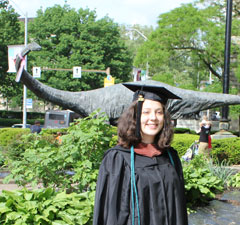 After two years writing for Technology in the Arts, I am leaving the Center for Arts Management and Technology. The unfortunate part about being a graduate student is that you will have to leave a place you love after a certain number of years, and my number is up! Special thanks to David and the rest of the CAMT staff for making the last two years amazing, educational, and memorable.
I am very excited about my new position with the data-driven arts and entertainment consulting firm TRG Arts. I have been hired as the Strategic Communications Specialist, which means I will serve as a writer and editor for the firm’s consulting projects, Data Lab research and analytics projects, and a contributor to TRG’s knowledge center online.
After two years writing for Technology in the Arts, I am leaving the Center for Arts Management and Technology. The unfortunate part about being a graduate student is that you will have to leave a place you love after a certain number of years, and my number is up! Special thanks to David and the rest of the CAMT staff for making the last two years amazing, educational, and memorable.
I am very excited about my new position with the data-driven arts and entertainment consulting firm TRG Arts. I have been hired as the Strategic Communications Specialist, which means I will serve as a writer and editor for the firm’s consulting projects, Data Lab research and analytics projects, and a contributor to TRG’s knowledge center online.
Before I leave Technology in the Arts, I wanted to share some of the secrets I learned during the last few months of looking for arts jobs, mainly at non-profit organizations. Because nonprofits usually begin their fiscal year in July, new positions at these organizations are often posted in the summer. That means now is the prime time for you to find your new dream job in the arts.
Here are my favorite tech tools to help you find that job:
Changedetection.com
Arts jobs often need to be filled quickly, which also means the time you have to apply is limited. We’ve all had the experience of finding a great—no, perfect—job and finding out that the “apply by” date has passed or being informed after you’ve submitted your resume that the company had already extended an offer to someone.
Changedetection.com comes in handy when you know that there is a company (or companies) you’d love to work for. Obviously you aren’t going to check in on the employment page of their website every day. Better that you just be notified when they post a job, right? Well, through the magic of technology, you can find out when that employment page changes. Changedetection checks the page every day, week or month (you specify which) and sends you an email when there has been a change.
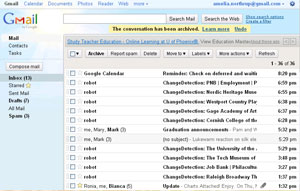
If there is a specific geographic location you know you’d like to work in, changedetection can help too. For example, I was looking for jobs in Portland at the beginning of my search. I looked on the arts council website and there wasn’t a job board, but I wasn’t going to let a silly little thing like that stop me! What the arts council site DID have was a listing of all the arts orgs in Portland. I put a changedetection on the employment page of each organization I was interested in and got on with my search.
The downside of tracking all these pages is that you might have to sort through some jobs that aren’t for you. For example, I looked mainly at full-time marketing jobs, but I was notified for ANY job at those companies, including development and box office jobs, and in some cases, internships. However, you can take this as an opportunity to build networks. If you see a great job in finance, maybe you have a friend who looking who also happens to be a finance whiz. Forward the job to her and not only have you strengthened your friendship, but also she may want to return the favor if she comes across a job that fits you.
I would recommend setting these up relatively early in your job search and keep adding as you find companies that are of interest to you. This way, you will also see which jobs come up and how frequently as well as important information like salary ranges and organizational structure information. (For example, will you be working for someone who is a new hire herself/himself? Is there a new Executive Director at the org?)
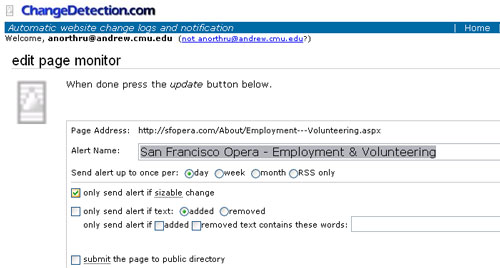
The interface for monitoring a page on ChangeDetection.com
LinkedIn has attempted to tout itself as a job-finding service. However, at the early-career/emerging leader level, I find that is less helpful for finding jobs and more helpful for simply networking. There’s not that many headhunters out there for arts jobs, except in the executive level and maybe for IT people.
Anyway, how many times have we heard that the arts world is a small world? I use LinkedIn to see if there’s anyone I know who may know someone at the company I am applying to. If your relationship is good with that person, ask them to put in a good word for you.
Sometimes LinkedIn groups will have job postings; I haven’t found this to be true for most of the arts admin/management groups though. Please comment below if you know of a good group for this.
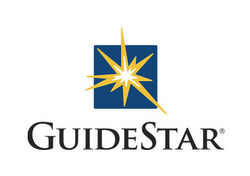 GuideStar
GuideStar
For non-profit organizations, it’s essential to check out the company on GuideStar. GuideStar is a free service that gathers and publicizes information about nonprofit organizations. Much of the information is geared toward donors and foundations, but there is a lot of useful information on it for the job seeker.
Once you register (free), you have access to almost any arts organization’s 990 tax forms, which means you can see what the organization’s budget size is and how they are doing financially. Note that for many organizations, the most recent year might be 2008 or 2009, so the information could be slightly dated or influenced by the recession—which is still important to know. The 990 serves not only as a way to see if the org has a record of keeping a balanced budget, but also as a historical snapshot of the organization, in terms of grants received, senior staff turnover, and capital campaigns and similar projects, among other things.
GuideStar is also extremely helpful to estimate salaries, especially if you are applying to a director-level position. The IRS requires non-profits to list the salaries of their five highest-paid employees. This is pretty valuable information, as the size of most non-profit arts organizations means that you aren’t likely to find very accurate information on that exact job at that exact organization.
Arts Jobs Sites
One of my friends posted a status update recently “wondering if CareerBuilder is really a builder”. I replied that all it had “built” for me was piles of emails in my spam folder. Personally, I’ve had a lot more luck overall with industry-specific sites, some of which can be used in conjunction with changedetection, as discussed above. (Bonus: The industry-specific sites manage to present you with jobs without asking if you want information from University of Phoenix every other time you go to look at a job. Just saying.) Here are my favorites:
General:
- CAMT’s own ArtsOpportunities
- Americans for the Arts' Job Bank
By discipline:
- Playbill Job Listings (mostly theatre)
- Theatre Communications Group's Arts Search (need a log-in and password for this one)
- Association of Performing Arts Presenters Job Bank
- Opera America Job Listings (also available as an RSS Feed)
- Dance USA Jobs in the Arts
- Association of Children’s Museums
- American Association of Museums' jobHQ
- Chronicle of Higher Education (mostly faculty positions at colleges and universities)
- Also, Createquity will occasionally post interesting opportunities, so that is worth adding to your RSS feed if you haven’t already.
State and local arts councils may have a good job posting site, depending on where you’re looking to find a job. For example:
- Greater Philadelphia Cultural Alliance
- Cultural Alliance of Greater Washington (Washington D.C., not Washington state)
- New York Foundation for the Arts
Lastly, if you have an interest in development or program management, heads up! There are a few sites/ email alerts that I’ve found especially useful:
Philanthropy News Digest (A service of Foundationcenter.org)
PND has created a job alert system that will email you a daily summary of recent jobs in your area of interest. I cast my net wide by checking a lot of states and position types (communications, development, program management, etc) when I signed up for the alerts. I now get about 15 job postings a day. The fields of the organizations are quite diverse too. A recent email contained jobs from Napa Valley Opera House, University of Chicago, the Rainforest Alliance, and Vera Institute of Justice.
Chronicle of Philanthropy posts mostly development jobs, which, like PND, you can sort by location, position type, and the field of the organization (education, health, museum, etc).
It’s also worth mentioning that DotOrgJobs is good for fundraising jobs and other nonprofit jobs; however, I have not seen a lot of arts-specific jobs from them. You can subscribe via email or RSS feed.
On organizing email alerts:
You might be saying to yourself, “That’s a lot of email alerts to deal with.” I use gmail and have set a rule to have these emails automatically labeled “job search” and archived so that they don’t clutter up my inbox. Then I set an alert on Google Calendar reminding me to go through them once a week, so that I actually read them! This can also easily be done with Outlook.
Do you know of any other good sources for arts jobs? If so, please post them below! Happy hunting!
Mobile Audience Participation with Jonah Bokaer and the Ferst Center
Audience interaction has become a pretty major trend this year and arts organizations around the country are experimenting with different ways to engage their audiences. But how does one go about making their experience a participatory one? Artist Jonah Bokaer and the Ferst Center for the Arts at Georgia Tech decided to approach the issue using mobile technology. Jonah Bokaer is an award-winning choreographer and media artist participating in the Ferst Center's first ever year-long dance residency program, ARTech. Jonah worked closely with students from the Georgia Tech Music Technology Program to develop MassMobile, a smartphone app that acts as an interactive platform for audience members to participate by affecting the stage in different ways. On April 2nd, MassMobile will premier with Jonah's new work FILTER at the Ferst Center.
I had to opportunity to speak with Jonah as well as Stephen Garrett, one of the graduate students on the MassMobile development team, and dancer Adam Weinert, who can be seen in the sneak peek video at the end of this post.
Where did the idea to include the audience in the performance, through a mobile app, come from?
Jonah - Well, in 2004 I made a work called RSVP, which planted 12 cellular devices in the audience. We used those devices and their ringtones to create the music for the piece. And that was engineered from offstage by the composer. But, when doing some initial research down here and planning this production called FILTER, I wanted to put forward the idea or the proposal that there could be interaction or intervention even, with the show. And maybe Stephen can take it from here, but we spoke with Jason Freeman and the Ferst Center and this relationship started.
Stephen – Yeah, and I think Jason’s idea, who is my advising professor on my master’s project, was to create a system that allowed for a rapid deployment of audience interaction devices through peoples’ mobile phones. So the idea came from Jason through some previous mobile development work and with several other projects, to create an iPhone and android application that will allow any type of input that the phones will allow. Whether that be an accelerometer, motion data, text messaging, touch data, drawing…anything that the phone will accept, to try and incorporate that into the performances in some way.
What are some of the direct ways that the audience is affecting the performance through MassMobile? Does it affect the lighting or are there sound elements that change?
Jonah - Well, one thing I just want to clarify is that this production will premier in it’s full form here in Atlanta on April 2nd. So we’ve had a six or seven day production period in Avignon France and we premiered the choreography, but MassMobile and these technological components have not yet been unveiled and actually this week we are holding a workshop with invited public to interact with it further.
So in terms of how the audience affects the performance? We’ve identified four ways for potential interaction. In particular I wrote in one section of the performance which is very much open-ended and is a 9 minute section which can basically be reconfigured a bit. Specifically the lighting is influenced. We worked closely with Aaron Copp, who is my lighting designer, to integrate that into the performance.
Stephen – And certainly MassMobile itself, the way that the app can interact with a piece, is not set in stone. It’s a creative conversation that is always happening. But specifically for this piece, for one of the sections that involves interaction during the pre-show, the audience is quite literally plugged into the lighting board through their app.
The actual technical details of the connection is that the mobile app is connected through a client server relationship to one of our servers here at Georgia Tech. Then there is a laptop that sits in the lighting booth that constantly pulls for information. Based on what items people have selected in the app, the laptop is connected directly to the lighting board and will instantly turn lights on and off. You can change color palettes and things like that pretty much instantly.
Did you build MassMobile specifically for this performance or is this a platform that could be used for other performances/performers?
Jonah – I would almost say that it is still in progress. But, you know, Aaron Copp and I have known each other since 1999 and have been building work together for a long time and often in our creative discussions we would say, “Is there some way to interface or interact?” As opposed to working with just video or with sound, lighting is so integral to these performances that MassMobile seems like a natural fit. I think that for light and choreography I am working in very particular ways. For larger applications of MassMobile I know there are many options.
Stephen – So MassMobile itself is the platform and the app, and is still in pretty active development. Working with Jonah and his FILTER has been a great way to beta-test the app and see it grow to more of its current capacity. My professor Jason Freeman already had the plan to use the application in a live music notation work with saxophone where the audience could directly affect the notes that the performer is seeing onscreen. So there are other uses for MassMobile in the arts imaginable.
Could you speak to the importance, for you, of having participation from the audience?
Jonah – Well, I should say that my degree is not in choreography, it is in media and visual arts. For my thesis I focused on the myth of interactivity and focused on a lot of mid to late video work in the 1980’s and 1990’s. My sense was that there is a certain parallel between what we could call this myth with interactivity with video, but also with performance. Just because it’s time based, it’s not necessarily interactive. This is one area of focus of mine in terms of creating performances.
I guess the impulse to say that an audience could interact, is still pretty much in progress. So far, at least in this stage in the piece, we’ve only had pre-show interaction. It’s kind of an open question.
I think some major conventions of theater are called into question, for example having the phones on during the show, the light of a cellular device on in the theatre. Some artists would consider this distracting, but in this case we are actually inviting it. There are certainly questions of attention and attention span. We’re sort of walking into this project and saying that it is assumed that this will be unusually structured.
So why create such an unconventional performance? Well really, the participation is a part of why we wanted to open this out. Because instead of really disrupting or undermining a performance, we wanted people to be able to engage and help the author.
Stephen – The way we’ve enabled that interaction is a very direct and literal effect the audience can have with the lighting of different parts of the stage. [The pre-show] is an opportunity for people to come in and the curtain is open and they can see the initial set and it gives them a chance to explore. Our hope is that creates a deeper and more meaningful bong throughout the rest of the performance. That [the audience] has really explored the set and can experience it on a different level.
In addition to the interaction between the viewer and the stage, do you think that this program will cause the audience to interact with each other?
Jonah – The way that we piloted MassMobile was to have six mobile devices distributed internally to members of the creative team, producers and close colleagues over the course of a few days. I did note, on a couple of occasions, the social interactions that would occur person to person. Maybe Stephen would like to address any interactivity within the platform itself.
Stephen – We did see people that were using the app that were sitting next to each other sort of communicating in person and coordinating their efforts, but at this moment that’s not something we’re doing. [Interactivity within the platform] is something we are looking at in the future of MassMobile. More specifically looking at how do we enable or make sure that people have their own voice in their interactions with the performance.
From a performer’s perspective, what is it like working with something like MassMobile?
Adam – From a performer’s perspective, I think what excites me most about this kind of initiative is that as a performer we’re always looking for new ways to engage the audience and make each articulation of the performance event unique and special and fresh. I think that MassMobile can be a unique way to do that.
The other thing I really appreciate is how we’re using this mobile technology and multimedia to make more personal the performance. Which I think is rare and hard to accomplish.
If you live in the Atlanta area I highly recommend heading over to the Ferst Center for the premiere of FILTER on April 2nd. You can find more information about performance times and tickets at the Ferst Center's main website here. Until then, he is a sneak peak of dancer Adam Weinert and MassMobile.
MassMobile App Sneak Peak from Ferst Center on Vimeo.
Fair Use of Dance-Related Materials: A Discussion
In response to CAMT's "Social Media, Video Footage and the Law" white paper, Lisa Niedermeyer from Jacob's Pillow Dance Festival contacted us with a related video about fair use as it relates to dance-related materials. As the white paper mentions, fair use can be a nebulous concept as far as what, how, and how much copyrighted material can be legally used. The video is a more detailed discussion of The Dance Heritage Coalition's published statement "Best Practices in Fair Use of Dance-Related Materials". It features curators, archivists, documentary filmmakers, librarians and other collectors of dance-related materials discussing what they currently regard as reasonable application of the Copyright Act's fair use doctrine.
Where we are different, we are the same
This post also appears as part of the Arts Marketing Blog Salon hosted by Americans for the Arts.

- Silos belong on farms, not in arts organizations.
As a writer for the Technology in the Arts blog, I am constantly thinking about which topics will appeal to which artistic disciplines, which specialty, which skill level… and on and on. But the more I have to think about the segmentation of the arts management audience, the more I realize how broad many of the issues we discuss are.
A few months ago, I interviewed Alan Cooke of the e-fundraising company Convio, and we talked at length about the problem of organizational silos. In arts organizations, as in any company, conflicts often arise between different departments and may develop into an “us against them” mentality. As arts organizations become more prevalent in the social media space, it becomes easier to see which organizations have truly good internal communication between marketing, communications, box office and development departments.
We also tend to think that orchestra problems are unique to orchestras, theatre problems unique to theatres, and so on. For example, a few months ago I was at an opera conference listening to a presenter from another artistic discipline, when a colleague leaned over and whispered, “Ok, but what does this have to do with opera?” Unsure how to respond, I sort of nodded in agreement, but later, I couldn’t stop thinking about it. True, it didn’t have much to do with opera, but, I would argue, the point of the conference was to learn new things, not to be told about things we already know.
Working in the non-profit world, we usually don’t pay attention to discussions and proposed solutions going on in the corporate world. We don’t think that their solutions will work for us. I’m in a class right now entitled Social Media Analytics, where the students are split up into teams and assigned a major corporation as a client. At first, I expected that the corporations would have a pretty good handle on their social media presence, in terms of who they were reaching, who they were converting and how they were making money from their social media sites. What I found, however, was that the for-profit companies involved in the project are asking a lot of the same questions that I see posted by non-profit arts companies all the time. How do we track audience engagement? How do we convert brand awareness to sales?
Technology, especially social media, is an industry in high flux. It’s easy to think that there’s someone out there with all of the answers, but the truth is we’ve only begun to understand, let alone master the seismic shift in online behavior and the potential of these new tools. We still struggle to find tools that will accurately “read” sentiment from user comments and accurately extract what people are really saying about our brand. We question whether our tracking of sales due to social media is accurate. We wonder how much effort, which platforms, and which campaigns are really worth our time.
One of the things I am looking forward to most at the NAMP Conference is getting this broad perspective across artistic disciplines. Learning from each other is one of the most important things we can do, and I’m looking forward to seeing how arts marketing, as a specialty, has developed in the past year.
Streaming, streaming everywhere
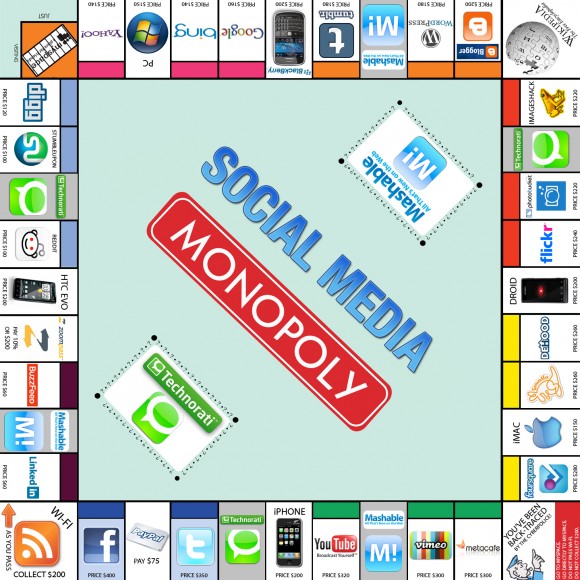 Last week YouTube did a two-day test to preview streaming capability, a move that would place them directly in competition with streaming sites such as livestream, ustream, and justin.tv. Streaming capability was available to four select YouTube partners — Next New Networks, Howcast, Young Hollywood, and Rocketboom for two days. Like the existing streaming sites, YouTube will allow for real-time comments and, eventually, embedding in widgets and archiving old streams.
Last week YouTube did a two-day test to preview streaming capability, a move that would place them directly in competition with streaming sites such as livestream, ustream, and justin.tv. Streaming capability was available to four select YouTube partners — Next New Networks, Howcast, Young Hollywood, and Rocketboom for two days. Like the existing streaming sites, YouTube will allow for real-time comments and, eventually, embedding in widgets and archiving old streams.
In all of YouTube’s communications , they only address giving this capability to their “content partners” anytime in the near future. YouTube content partners are people and companies that post regularly to the site and apply to YouTube in order to monetize their content with ads and rentals, obtain better quality for their uploads, and use YouTube’s Insight analytics tools. (Note: YouTube has a special program for non-profit partners. Check it out.)
Evan Rosenberg of Anaheim Ballet, a member of YouTube’s nonprofit program, produces the series “Anaheim Ballet: More Than Dance…” (See below for an excerpt.) He described the company’s hopes for its channel.
“YouTube has made it possible to not only showcase ourselves (Anaheim Ballet), but ballet in general to a global audience to the tune of over 24 million views. We look forward to using this additional tool (live streaming) in our continuing effort to spread the art of ballet across cultural, age, and economic boundaries.”
One of the videos on Anaheim Ballet's YouTube channel.
What are the implications for performing and performance arts organizations as streaming video becomes more and more ubiquitous? As a company or an artist, live performance is our product. Thus, we have faced issues with online video platforms since their rise in popularity:
We wonder if capturing that artistic product and distributing it online dilutes the aesthetic appeal.
We wonder if we should side with our artists and unions who deserve credit, payment, and a future in their industry, or with the insistent board member who says we must post video to capture the elusive younger market segment. We wonder if these interests are indeed in conflict.
We wonder if it cannibalizes box office revenues. And we wonder if we should give our audience members more credit; we know the difference between live performance and video, and so do they…right?
Online video is here to stay. This announcement is one more step in a long staircase of live streaming video becoming the norm. Fifteen years ago everyone had to have a website. Four years ago everyone had to have a Facebook page. Last year, everyone was going to mobile apps. With YouTube’s announcement, it’s easy to see performance footage moving from the movie theatre and the ballpark to laptops, phones, and iPads.
Speaking of new platforms for video, is everyone aware of the changes coming up for Twitter?












